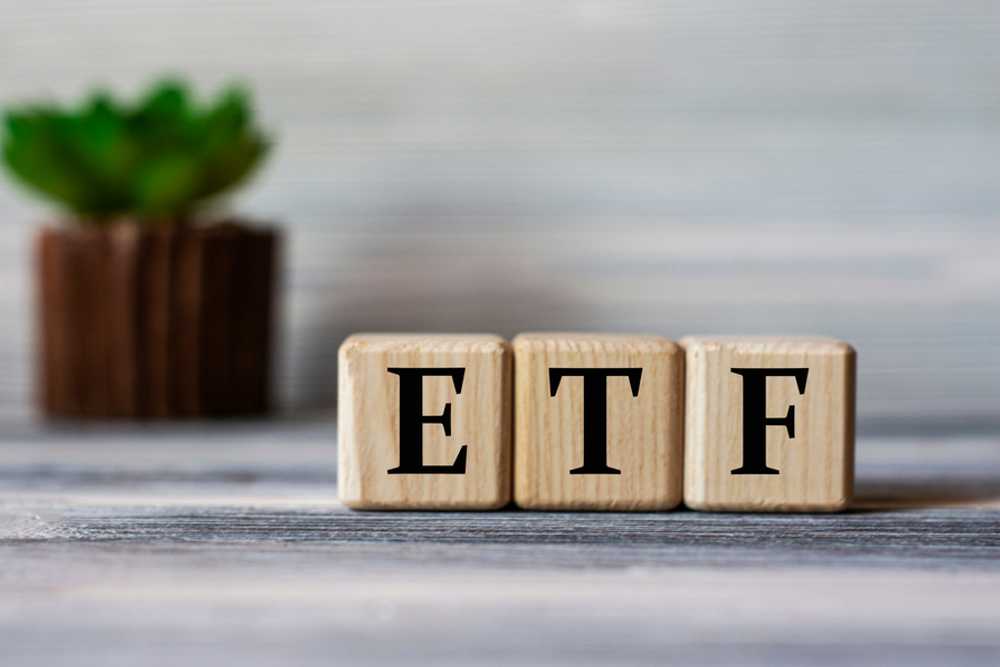Investors of all experience levels – beginners and people who have been investing for years – often turn to exchange-traded funds (ETFs) for their ease of investing and potential gains. With traditional stocks, you purchase a specific number of shares of stock from a designated company. However, with ETFs, you select a fund based on your investment objective and then the fund manager uses the money to buy stock based on that objective.
For example, if you are interested in investing in technology companies, you can select a technology ETF that will use your money to invest in shares of top-performing technology companies. If the ETF you invest in is a passive fund, then the fund tracks the index. But if it’s an active fund, then a fund manager will actively select the best technology stocks for the fund based on the goals of the fund. Like other types of similar investments, most ETFs pay dividends, which you can either receive as cash or directly reinvest.
ETFs vs. Mutual Funds
While on the surface ETFs may appear similar to mutual funds, there are several key differences. Unlike mutual funds, most ETFs track to a specific index, such as the S&P 500 or Dow, meaning that they try to match or outperform the index, depending on the type of fund. Because most ETFs are passive, meaning they’re not actively managed, and the costs are typically substantially less than those of mutual funds. Another key difference is that ETFs are traded on the exchange, which is not true for mutual funds. Additionally, the price of an ETF changes throughout the day like stocks, while mutual funds are priced the same throughout a single day.
Who Should Invest in ETFs
With stock trading, you need to fully understand the company and carefully watch both the company news and stock prices, which requires both time and expertise. However, when you invest in an ETF, you research the type of ETF, but then the fund manages itself. ETFs are a great choice for an investor with limited time and knowledge.
Investors who have a lower risk tolerance may also want to consider an ETF. With stocks, you are putting all of your money into a single company, which means that a bad earnings report or a scandal can cause you to lose a lot of money very quickly. Because ETFs are spread over multiple companies, the risks are reduced significantly for most funds.
Because ETFs allow investors to purchase a single share or as many as they want to buy, investors with smaller budgets often find ETFs a more favorable option than other investments. Many mutual funds have high minimums, often $2,500 or more. While ETFs attract all levels of investors, experts often recommend ETFs to newer investors because of the budget and less expertise required.
Investing in an ETF
If you want to invest in an ETF, then the first step is to open a brokerage account. You can do this through a full-service institution or an online service. ETFs offer diversification, but also you can use a digital investment management app like Q.ai to invest in several ETFs at once in a strategy (called a "kit") developed by the Q.ai team.
Next, you select the ETF you want to invest in and the amount of money to invest. Then you monitor your results and collect your dividends. Many people start small with ETFs and add to their investment over time, such as each month or with bonuses.
Common ETF investing mistakes
The biggest risk with ETFs is liquidity. Because ETFs can be sold short, if a panic ensues and a particular fund is heavily shorted, the fund might not have enough cash to satisfy those orders. It’s a hypothetical problem, but one that is certainly possible. This risk can be mitigated by selecting ETFs with a good deal of liquidity.
In building an ETF or mutual fund portfolio, it’s important to allocate exposure to all major spaces. In building an individual stock portfolio, include all major sectors. As a general rule of thumb, do not allocate more than 5% to 10% to any one investment.
Every time you buy or sell a stock, you pay a commission. This is also the case when it comes to buying and selling ETFs. Depending on how often you trade an ETF, trading fees can quickly add up and reduce your investment’s performance. No-load mutual funds, on the other hand, are sold without a commission or sales charge, which makes them advantageous, in this regard, compared with ETFs. It is important to be aware of trading fees when comparing an investment in ETFs with a similar investment in a mutual fund.
If you are deciding between similar ETFs and mutual funds, be aware of the different fee structures of each, including the trading fees. And remember, actively trading ETFs, as with stocks, can severely reduce your investment performance with commissions quickly piling up.
Tips for Investing in ETFs
Many investors mistakenly apply the same approach to ETFs as they use with stocks and mutual funds. However, because there are differences with how ETFs are structured, investors should carefully apply ETF-specific investment strategies.
Here are some tips for getting the most out of ETFs.
- Know the expense ratio for an ETF before investing. If you are considering multiple ETFs, be sure to compare the expense ratios, which measure the percentage of the assets spent on operation expenses. If an ETF has a higher expense ratio, then you will see a lower total return. Even though ETFs as a whole have lower expense ratios than other investments, selecting an ETF with a higher expense ratio can significantly lower your profits.
- Consider dollar cost averaging. This means that you determine a set amount each week or month to invest, regardless of the purchase price of the ETF share. A benefit of this strategy is that you get into the habit of regular saving and investing, which builds upon itself over time, especially if you reinvest your dividends. With dollar cost averaging, the cost of your holding averages out since you get fewer units when the price is high and more when the price is low.
- Use limit orders. When you set a limit order, you typically get the best price on the sell. You should typically only use market orders if you want to sell as quickly as possible. But with most ETFs being more liquid, limit orders are the smartest move.
- Be aware of commissions. Similar to stocks, you pay a commission fee to the broker each time you buy and sell. Consider these costs, which can quickly add up, when making purchasing decisions. By purchasing on a regular schedule and using limit orders, you can limit the paid commissions instead of reacting to the market.
ETFs can be a great place to get started with investing, both in terms of gaining knowledge and earning money. By carefully creating your strategy and making careful decisions, ETFs can be a profitable way to build your portfolio.
FAQs
How much money do you need to be able to invest in ETFs?
You only need the amount of a single share for the specific ETF and for covering your commissions and any extra fees. Unlike mutual funds, ETFs do not have minimum investment amounts.
Are ETFs good for beginners?
Yes. Because of the low startup costs and the fund management, many investors get started with investing through ETFs.
How is an ETF different from a stock?
When you buy stock, you are buying shares from a single company. In contrast, an ETF contains shares of stock from many companies based on the ETF’s objective, such as an index or industry type.
Are ETFs safer than stocks?
Typically, yes. Because an ETF contains many companies, the performance of a single company affects the ETFs only minimally. However, if you buy an industry-specific ETF, then your investment can go low if the entire industry crashes, such as the housing crash of 2008 or cruise lines during the COVID-19 pandemic. ETFs also tend to rebound after large crashes more quickly than stocks do.
Do ETFs pay dividends?
Most ETFs pay dividends. However, the amount and terms depend on the specific ETF.

